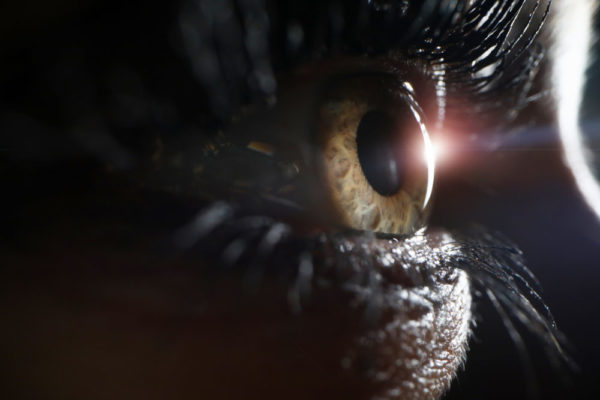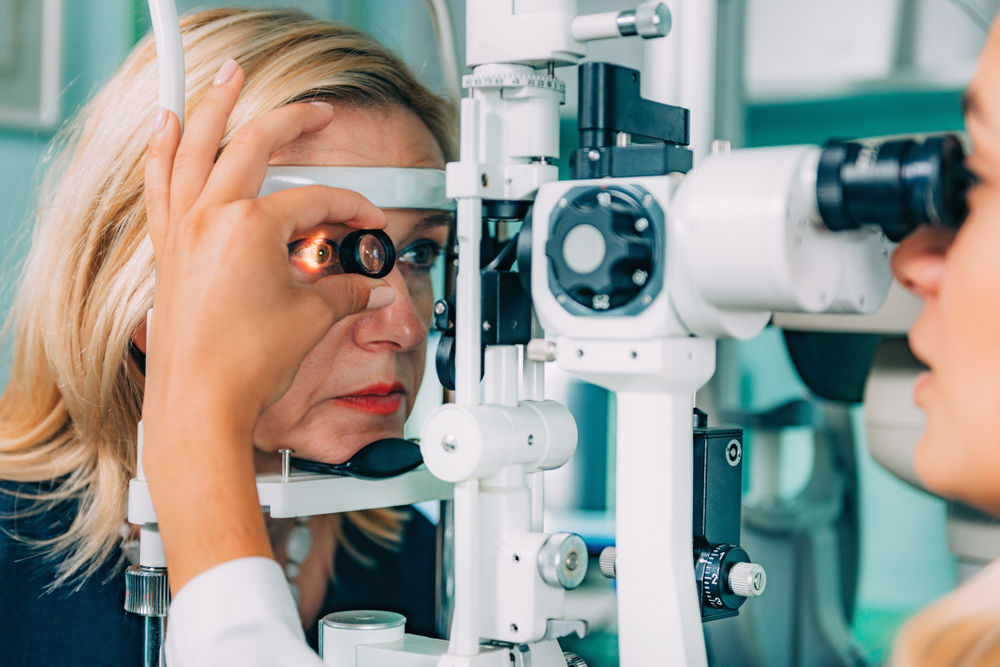Elmiron Lawsuits
Researchers have linked Elmiron, an internal cystitis medication, with serious vision problems that might lead to permanent vision loss. The manufacturer now faces lawsuits from people who developed maculopathy after taking the drug for extended periods. Elmiron is the only FDA-approved oral medication to treat internal cystitis, also known as painful bladder syndrome. Doctors have prescribed Elmiron to millions of patients, some of whom went on to experience retinal problems. In 2020, a patient who suffered eye injuries after long-term Elmiron use filed a lawsuit against drug manufacturer Janssen Pharmaceuticals. Hundreds of people have sued the drug manufacturers who produce and manufacture Elmiron in the two years since.
Table of Contents
What Is Elmiron?
In 1996, Janssen introduced Elmiron to the market after receiving approval from the FDA. The drug is a blood thinner that acts as a bladder protectant, preventing irritation of the bladder walls. Its active ingredient is pentosan polysulfate sodium. Doctors only warned of side effects like diarrhea, upset stomach, hair loss, rash, and trouble falling asleep for years. It wasn’t until recently that researchers linked Elmiron with eye disease.

In June 2020, the FDA added a warning to Elmiron’s label about pigmentary maculopathy. This condition has only been found in people who took Elmiron. Pigmentary maculopathy is a disorder that affects the macula in the center of the retina. Elmiron’s manufacturer says that patients who experience blurred vision, trouble reading, or trouble adjusting to light should contact their doctors. The FDA now recommends that patients prescribed the drug get regular retina checks. But the warnings are too late for patients who were given the medication and had no way of knowing that they could be putting their eyesight at risk.
What is Interstitial Cystitis (IC)?
 Interstitial cystitis is a bladder condition characterized by frequent, painful trips to the bathroom. Some interstitial cystitis sufferers will find themselves running to the toilet 60 times a day and unable to sleep because of the constant urge to urinate. The condition affects mostly women, and there’s no known cure. Some common symptoms include:
Interstitial cystitis is a bladder condition characterized by frequent, painful trips to the bathroom. Some interstitial cystitis sufferers will find themselves running to the toilet 60 times a day and unable to sleep because of the constant urge to urinate. The condition affects mostly women, and there’s no known cure. Some common symptoms include:
- Stomach, back, or pelvis pain
- Bladder pressure
- Burning while urinating
- A persistent need to urinate
About 5 to 10 percent of interstitial cystitis patients will eventually develop bladder ulcers. The emotional impact of interstitial cystitis isn’t fully understood. Still, the persistent pain and lack of sleep can take a toll. Research has found that depression and anxiety disorders are more common in sufferers. There’s no known cause for the condition, but it is seen more frequently in some populations. Women are more likely to develop IC, and most people are diagnosed after they turn 30 years old. Additionally, conditions like irritable bowel syndrome might increase the risk of interstitial cystitis.
How Elmiron Works
After someone is diagnosed with interstitial cystitis, their doctor will offer treatment options. Some cases are mild enough that eliminating alcohol, caffeine, and artificial sweeteners will resolve symptoms. Others are severe enough that a patient might need surgery to remove parts of the bladder. For IC cases that are treatable by medication, Elmiron is usually the first choice. Interstitial cystitis is caused by an irritated or inflamed bladder wall. Elmiron attaches to the bladder wall and can act as a buffer between the irritants in urine and the bladder wall. The average patient will take 300 milligrams of the drug daily. For those who have suffered from IC symptoms for years, Elmiron can provide long-awaited relief.
In 2018, doctors from the Emory Eye Center wrote a letter to the editors of the Journal of Urology to publicly express concern about patients developing macular problems after long-term Elmiron exposure. On average, these patients took the drug 15 years and complained of trouble seeing in the dark and difficulty reading. The doctors performed tests and noted that no patient had a family history of retinal disease. Their observations spurred other researchers to investigate a link between Elmiron and eye problems.
A 2019 study from ophthalmologists at Kaiser Permanente found that one-fourth of the 91 patients they examined who took Elmiron for an extended time had eye damage. The chances of injury were higher for people who had taken more of the drug, with 42% of patients who took more than 1,500 grams showing drug toxicity. The researchers recommend that patients experiencing eye problems talk to their urologists about stopping Elmiron in hopes of reversing the damage. Since these studies were published, ophthalmologists from all over the country have come forward to share reports of maculopathy in patients who took Elmiron for years.
 What is Maculopathy?
What is Maculopathy?
Maculopathy is a disease that affects the macula, which is part of the retina. The retina is a layer of tissue in the back of the eye that’s responsible for sensing light and sending signals to the brain. The macula provides detailed central vision and makes it possible to read, drive, and distinguish faces. When the macula is damaged, it becomes difficult to see things in the center of vision. Macular degeneration is the top cause of legal blindness in people over 60 years old. Age-related maculopathy is the most common form of the disease, but the deterioration can begin as early as childhood.
Elmiron patients are likely to be diagnosed with pigmentary maculopathy, a unique disease caused by a buildup of pentosan polysulfate sodium in the retinal cells. Because age-related degeneration is so common and the pigmentary condition is comparatively rare, there’s a chance that doctors will misdiagnose patients with the wrong disease. The study from Emory Eye Center implored physicians to conduct their research, saying that “clinicians should be aware of this condition because it can be mistaken for other well-known macular disorders, such as pattern dystrophy and age-related macular degeneration.”
Status of Elmiron Lawsuits
It’s been four years since researchers first linked Elmiron to macular degeneration. Since they published their findings, hundreds of people have sued Janssen Pharmaceuticals, the Johnson & Johnson subsidiary that manufactures the drug. These plaintiffs seek damages for bodily injury, pain and suffering, medical expenses, economic disability, and more.
Most product liability cases fall into three categories: defective manufacturing, defective design, or failure to warn of risks adequately. Defective manufacturing happens when something goes wrong during production and makes a product dangerous. In defective design cases, the product is inherently flawed from the start. Lastly, failure to warn is a common claim in prescription drug cases. A manufacturer can’t use ignorance as an excuse if a product causes injury. They must remain knowledgeable about their product and any potential problems that it could cause.
Plaintiffs allege that Janssen failed to tell patients and doctors about Elmiron’s potential risks sufficiently. The medication label warning didn’t include eye disease until the FDA added it in 2020 — nearly 25 years after Elmiron hit the market. The lawsuits filed against Janssen Pharmaceuticals claim the company knew or should have known that Elmiron is dangerously defective and hid that information from doctors, patients, and federal regulators. This doesn’t mean that Janssen was necessarily involved in an elaborate cover-up. Companies can be found negligent even if they don’t act maliciously. Some Elmiron patients say they would’ve stopped the medication if they knew about the maculopathy risk and sought alternative treatment. Instead, they were only aware of mild side effects that weren’t expected to have a long-term impact.
In 2020, the lawsuits were consolidated into multidistrict litigation (MDL). During this procedure, civil cases from around the country are all transferred to the same federal court to make it easier to process them. Lawyers estimate that 1,000 more cases could be filed in the next year as more people learn about the connection between Elmiron and macular damage. These lawsuits are still in the early stages, and there haven’t been any settlements or trial verdicts. The cases aren’t expected to go to trial until early 2023, and it’s uncertain how much money each plaintiff will receive.
Should I File An Elmiron Lawsuit?
 Elmiron is most likely to cause problems after long-term use. Most people who develop maculopathy take the drug for several years before their symptoms begin. If you take Elmiron for interstitial cystitis and have experienced any eye problems, you should seek medical treatment and then consult an attorney to discuss your legal options. You could be entitled to reimbursement for doctor’s visits and medical bills, along with compensation for lost wages, economic loss, and more. To have a successful case, you must show that you experienced an injury due to Elmiron use.
Elmiron is most likely to cause problems after long-term use. Most people who develop maculopathy take the drug for several years before their symptoms begin. If you take Elmiron for interstitial cystitis and have experienced any eye problems, you should seek medical treatment and then consult an attorney to discuss your legal options. You could be entitled to reimbursement for doctor’s visits and medical bills, along with compensation for lost wages, economic loss, and more. To have a successful case, you must show that you experienced an injury due to Elmiron use.
Once you decide to seek treatment, you should contact an ophthalmologist for a retinal exam and official diagnosis. It’s also important to ask them about your long-term prognosis and which treatment they advise. If you decide to pursue a lawsuit, you’ll need medical records to prove that you’ve been injured.
An attorney will likely offer you a free case review to find out more about your experience with Elmiron. They might ask you questions about your health history, like how long you took the medication before you developed eye symptoms and whether you have a family history of retinal disease. The statute of limitations to file a product liability claim varies depending on where you live, but most states allow only a few years after the injury happened or after you were made aware of the injury. A lawyer can help determine whether you should pursue a lawsuit against Elmiron’s manufacturers.








